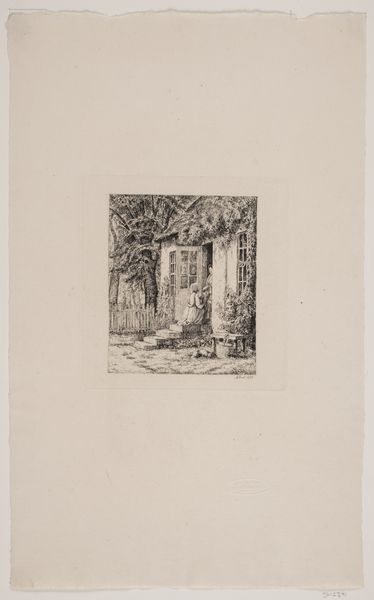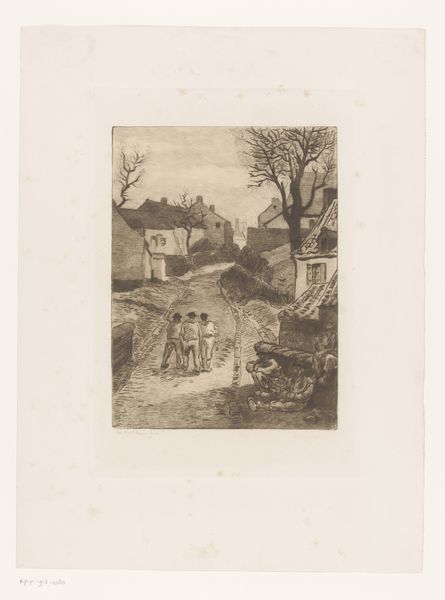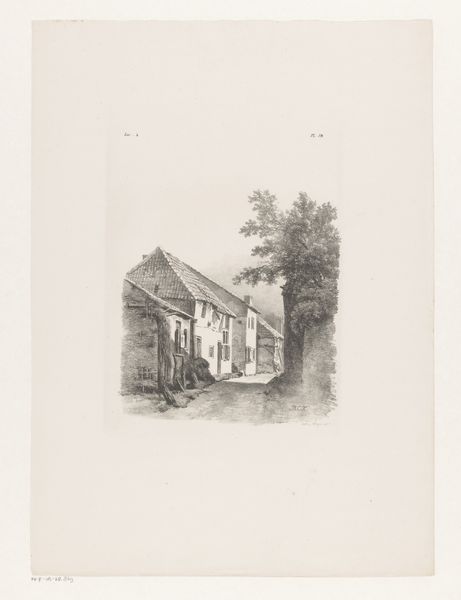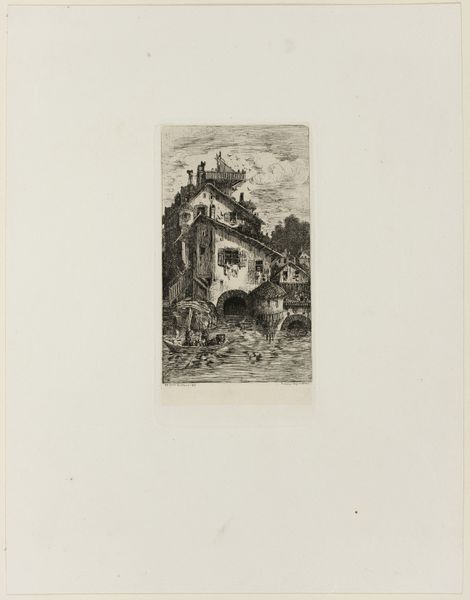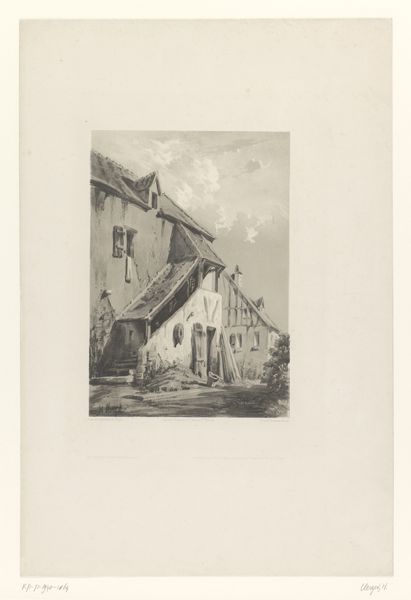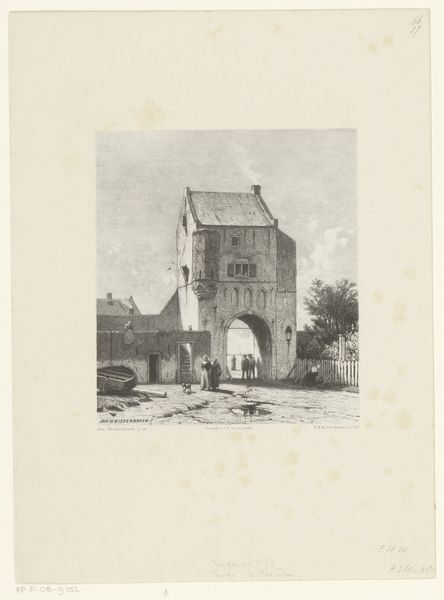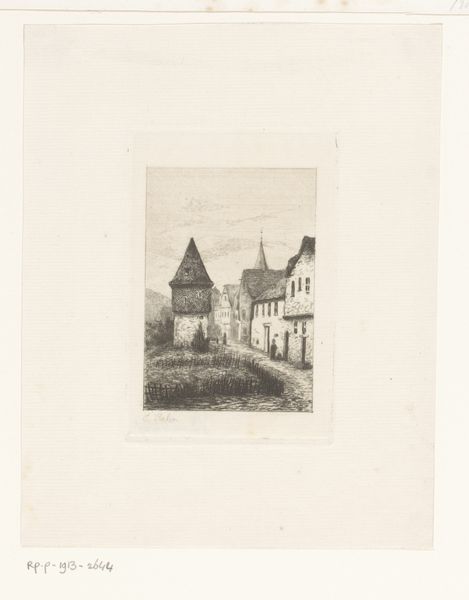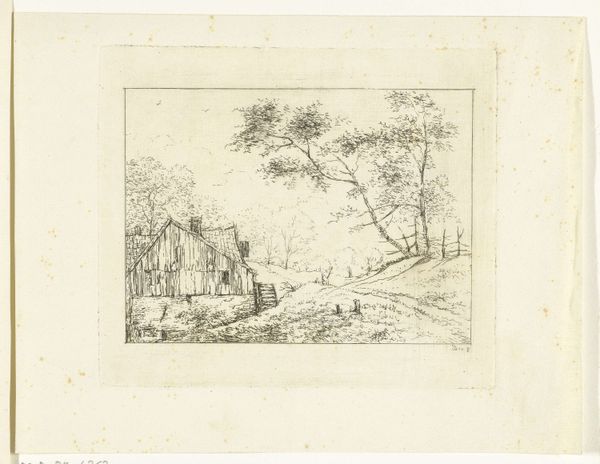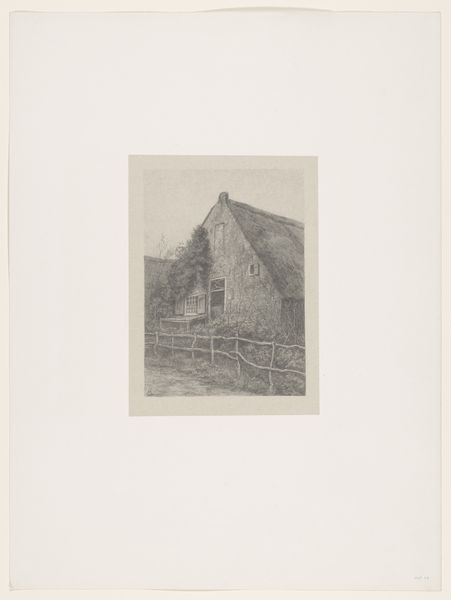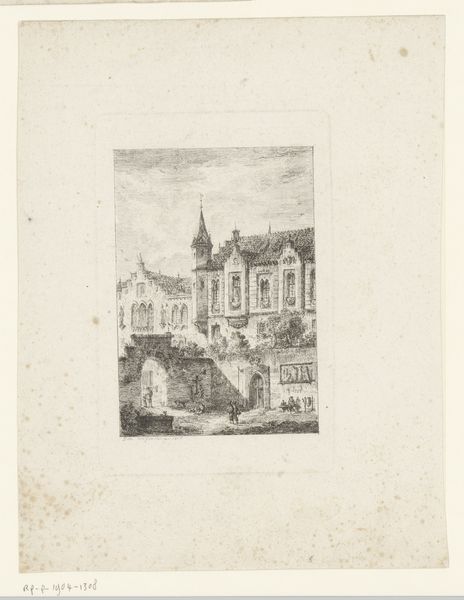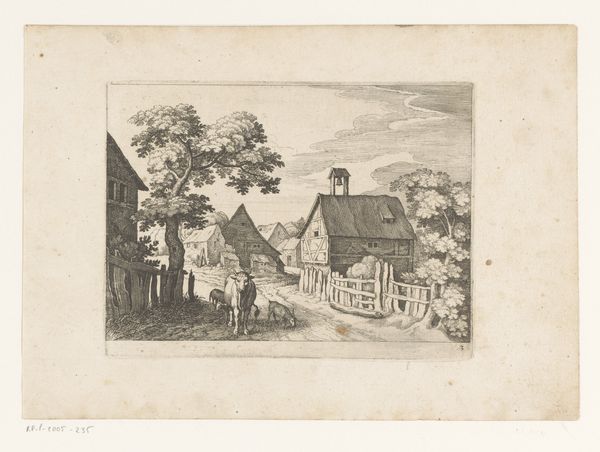
Vrouw met dienblad in de deuropening van een huis waarvoor een lezende man en een figuur met paard 1852
0:00
0:00
Dimensions: height 150 mm, width 127 mm
Copyright: Rijks Museum: Open Domain
Editor: This etching from 1852 by Polynice Auguste Viette, titled "Vrouw met dienblad in de deuropening van een huis waarvoor een lezende man en een figuur met paard," shows a woman holding a tray in a doorway. It feels very domestic and has a sort of everydayness to it. What do you make of it? Curator: I see a rich study in materiality here. Consider the printmaking process itself—etching. The artist manipulates metal, acid, and ink to create this scene. The labor involved, the sheer *making* of it, speaks volumes. How does the choice of etching, a relatively accessible printmaking method at the time, inform our understanding of its potential audience and the artwork's role in the art market? Editor: That’s interesting. I hadn’t thought about the etching itself as being so important. So you’re thinking about the access people might have had to artworks like these? Curator: Precisely. And what about the depiction of everyday life? This wasn't a commission for a royal portrait. Viette highlights the mundane – reading, tending to animals, a woman carrying something. This speaks to a growing interest in the lives of ordinary people, reflecting a shift in societal values and a burgeoning middle class with its own consumer desires and tastes. How is that class implicated by, and invested in, representing such images? Editor: So the artwork itself, the materials used, and the subject matter all reflect the society it was created in? It really changes my perspective. I see how the "everydayness" I initially saw connects to broader economic and social forces. Curator: Indeed. By analyzing the materials and production, we gain a deeper understanding of art as a cultural product, shaped by labor, consumption, and the means of its creation.
Comments
No comments
Be the first to comment and join the conversation on the ultimate creative platform.
